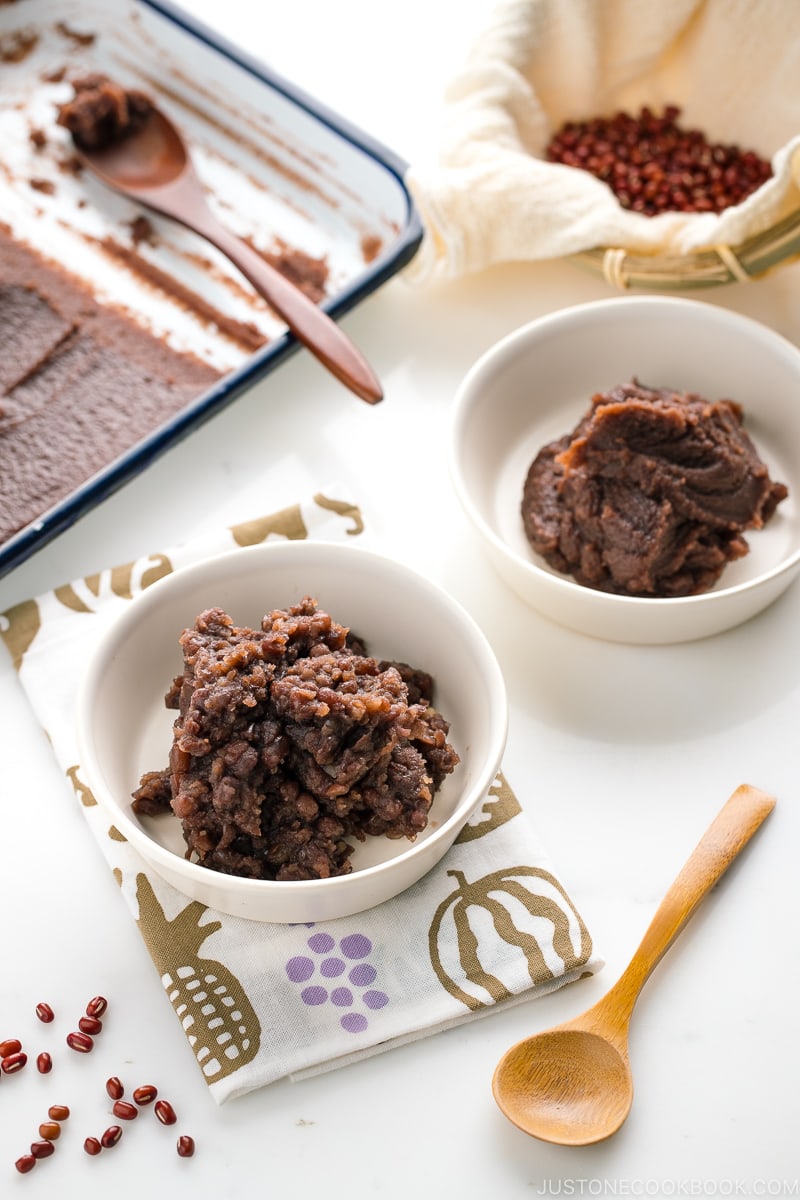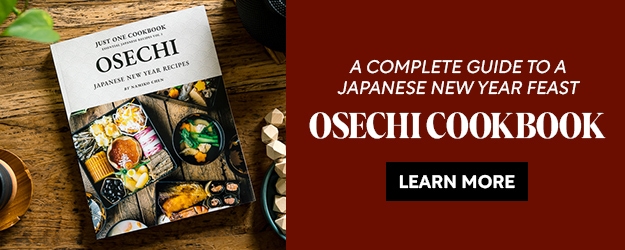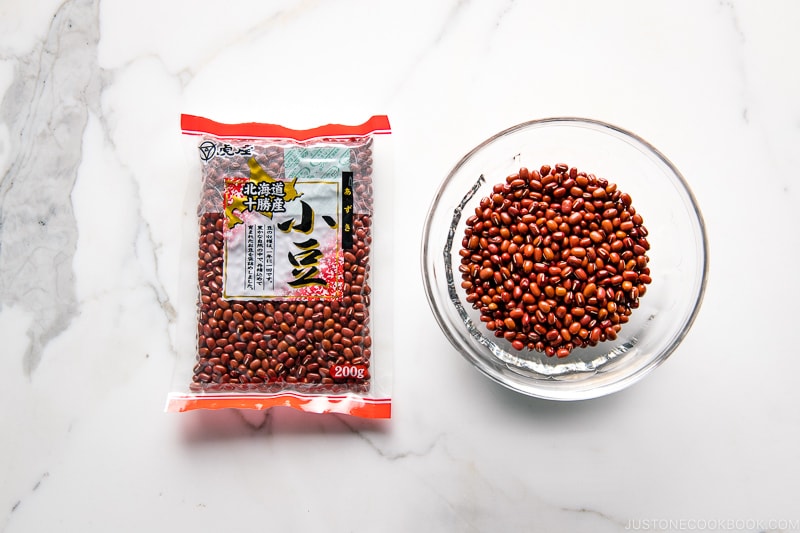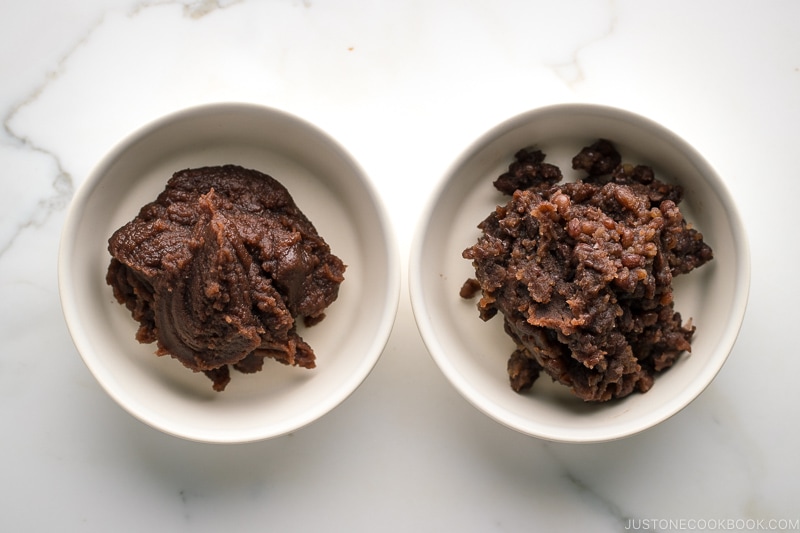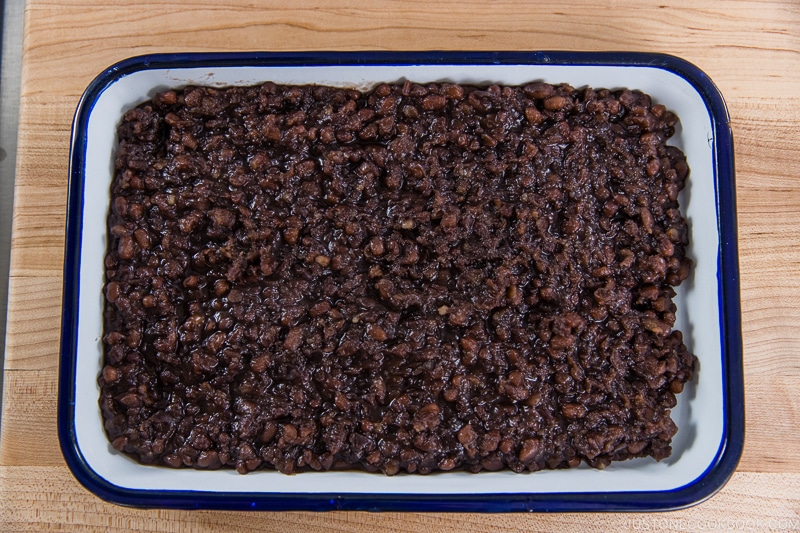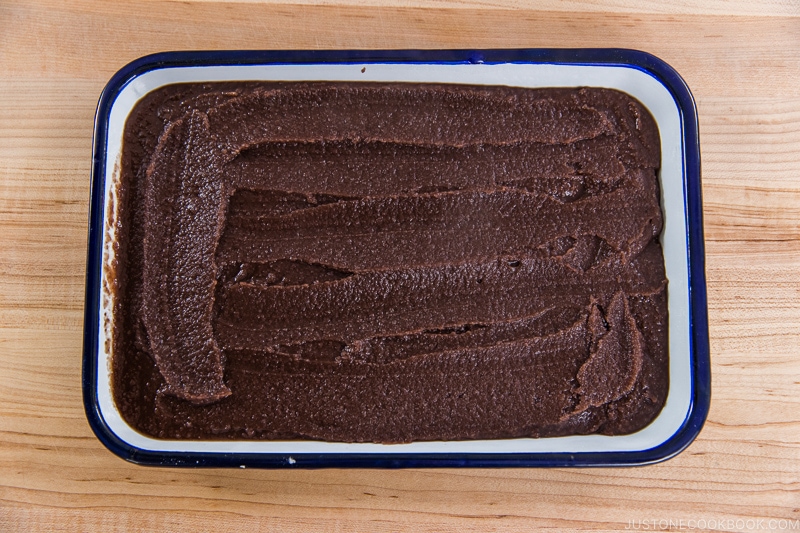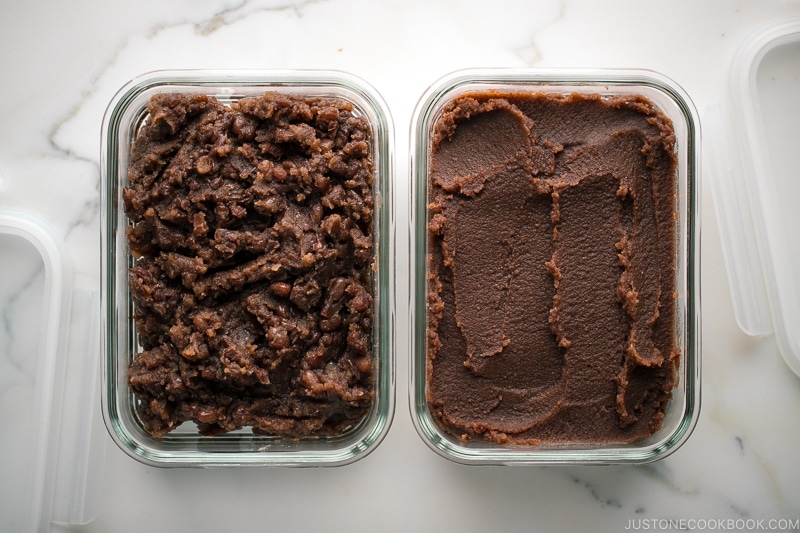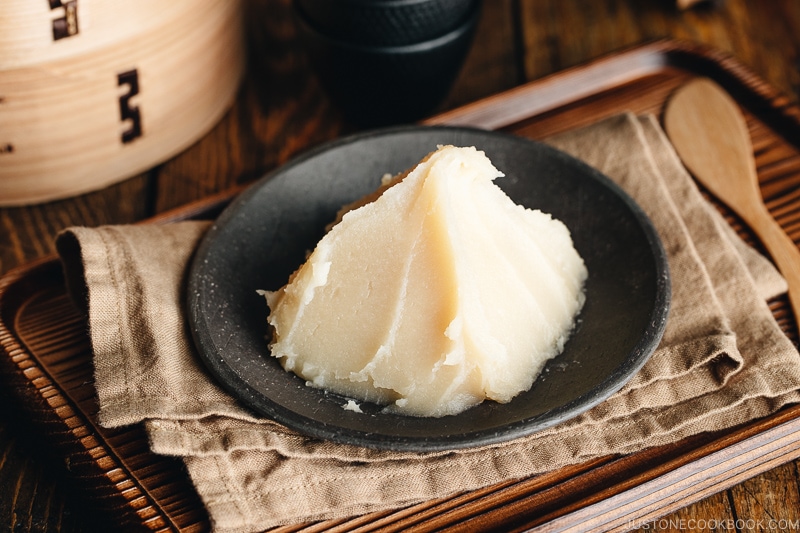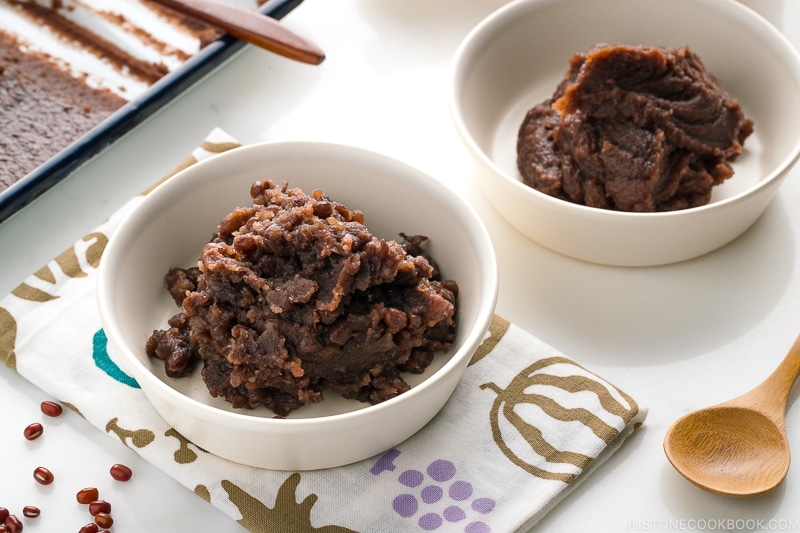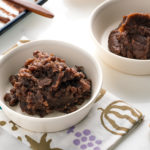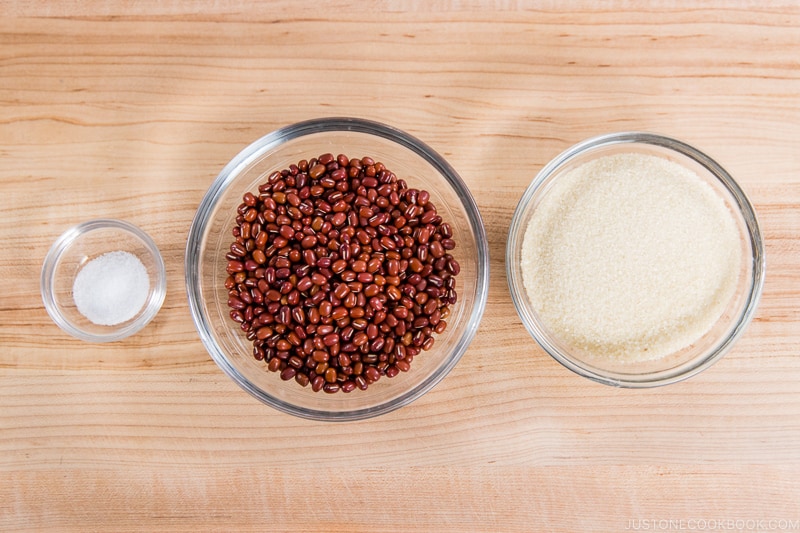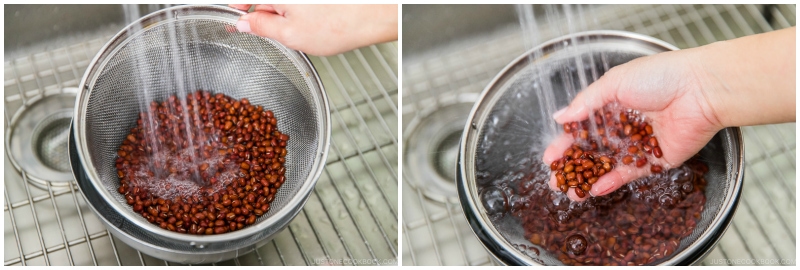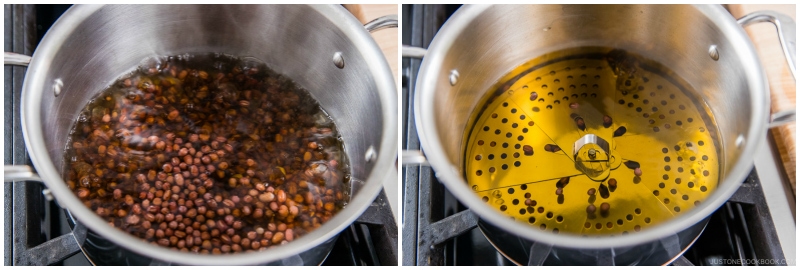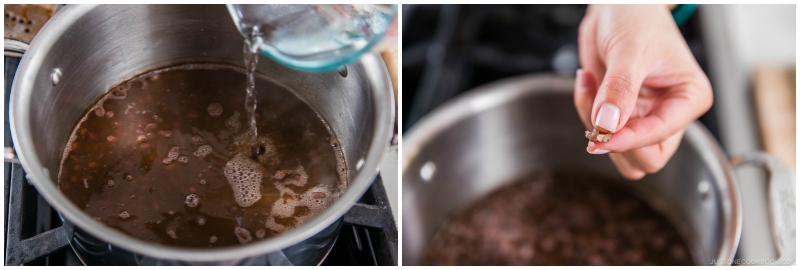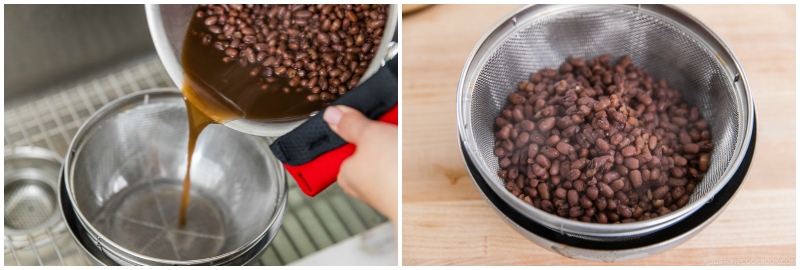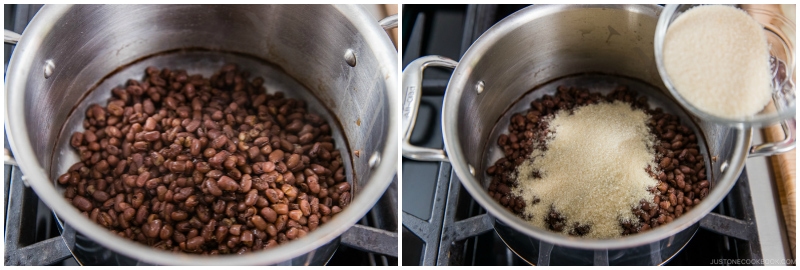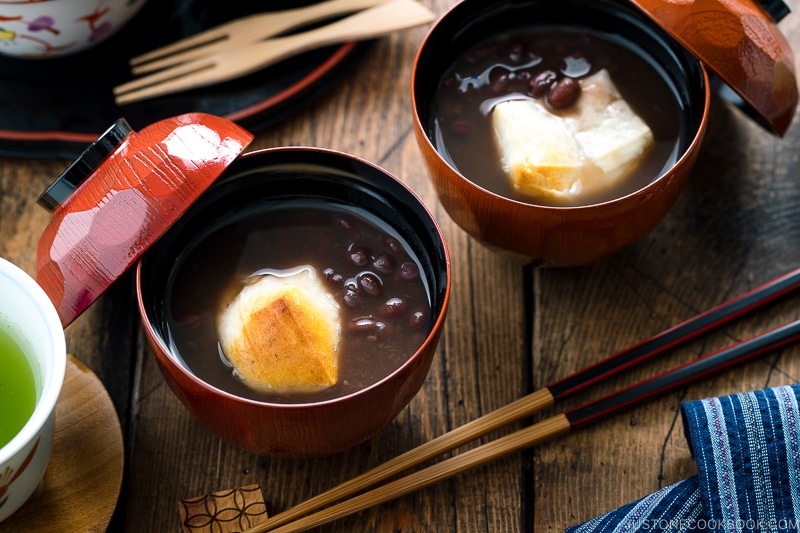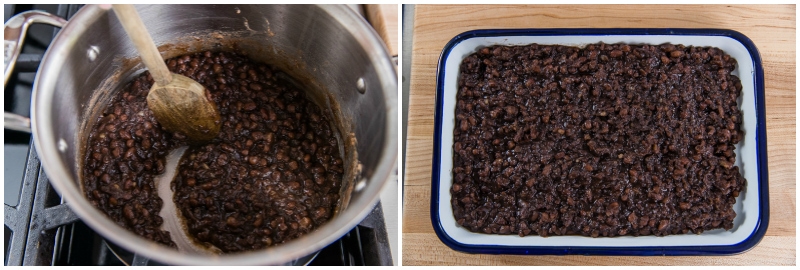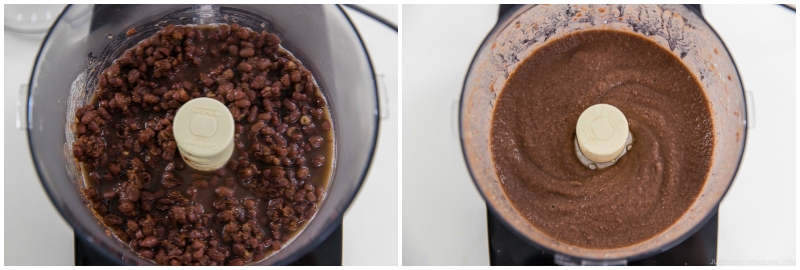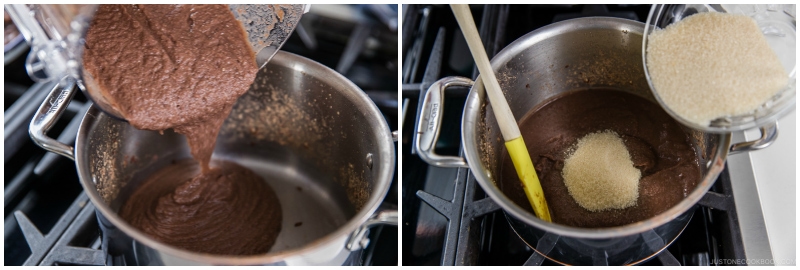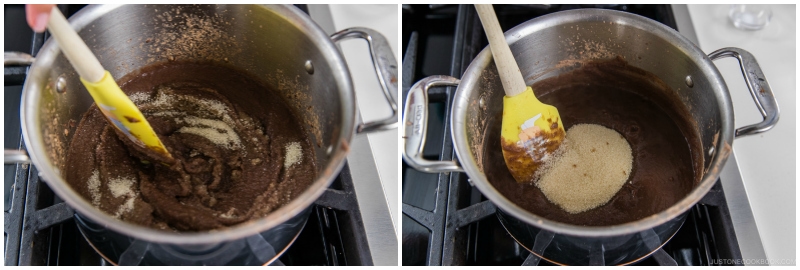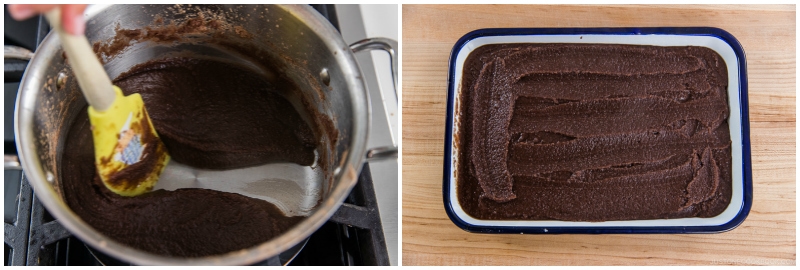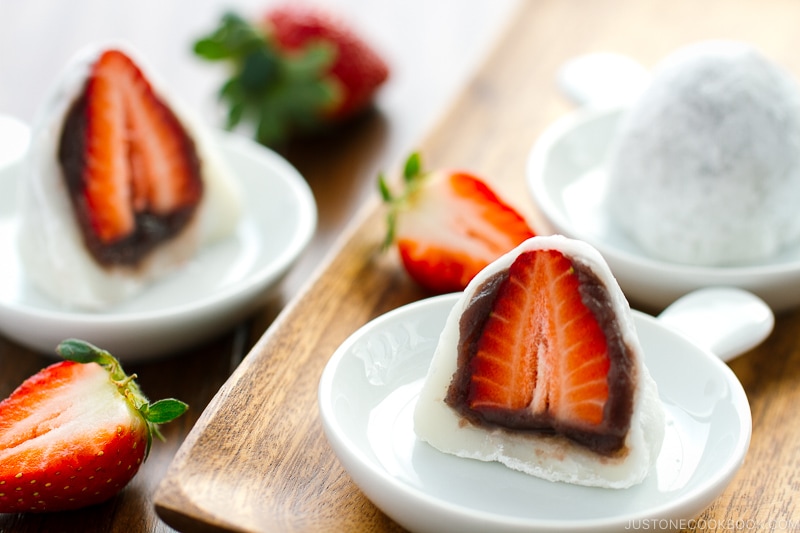Do you love Japanese sweets and desserts? If you’re like me who enjoy eating them all, then it’s time to make Anko (餡子) aka sweet red bean paste! It is the most basic and favorable filling in traditional Japanese confectionery and pastry. Whether it’s Daifuku Mochi, Dango, Dorayaki, Taiyaki, Manju, or Anpan, they are filled with Anko and bursting with the deep, sweet flavor of red beans. So let’s learn how to make Anko red bean paste today!
What is Anko?
Sometimes known as An (餡), Anko (餡子, あんこ) is a Japanese sweet red bean paste made from azuki beans. It is the most common filling used in many Japanese sweets. In fact, you can find sweet bean paste in many other Asian pastries and desserts. In Japanese cooking, the word “Anko” or “An” usually refers to a red bean paste, but it also implies other varieties such as:
Shiroan (白あん) – made from lima beans or butter beans. Learn more about it on White Bean Paste (Shiroan) post. Kurian (栗あん) – made from chestnuts.
How to Make Anko
It is usually prepared by boiling azuki beans, sometimes mashing them, and then sweetening the paste with sugar. Azuki, or sometimes written as Adzuki, literally means ‘small beans (小豆)’ in Japanese. Japanese azuki beans are mostly cultivated in the Hokkaido area. The bigger variety of azuki beans is called Dainagon (大納言) and it is slightly more expensive than Azuki beans. You can find azuki beans from Japanese grocery stores or health food stores.
2 Types of Anko (Sweet Red Bean Paste)
There are two most common types of red bean paste: How Do We Choose Which One to Use in Recipes? There’s no strict rule to this. Just like peanut butter, you can choose chunky versus smooth texture based on your preference. I personally prefer chunky beans in Japanese confectioneries and pastry, so I’d always make Tsubuan for Daifuku Mochi and Anpan,
How to Make Tsubu-an (Chunky Sweet Red Bean Paste)
Tsubuan (粒あん) is prepared by boiling the azuki beans and sweetening with sugar. Bean skins are still left in the paste and the beans are not fully “mashed” although some of them are crushed or mashed during cooking. I usually make Tsubuan because I prefer the texture and it’s also very easy to make!
How to Make Koshi-an (Fine Sweet Red Bean Paste)
Traditionally, Koshian (こしあん) requires more steps to prepare. After cooking the beans, you will have to: That’s a lot of physical work! So these days, the home cooks just turn on the food processor to make the fine paste, without removing the bean skins! Personally, I do not see a big difference in the Koshian between the traditional, time-consuming method and the food processor method. In this recipe, I’ll show you the food processor method. You can use a blender too.
5 Useful Tips for Making Anko At Home
1. No More Soaking Azuki Beans Overnight
In my previous recipe, I soaked the azuki beans in water overnight. I was taught by my grandma that azuki beans have very hard skin so it’s good to soak. However, these days many articles and recipes mention that we do not need to soak azuki beans anymore. For the first 4 hours, azuki beans do not absorb any water and require 18 hours to soak. Therefore, it’s recommended to just start cooking right away. I have been following the new method and I actually don’t see any difference from my previous recipe. Now I can make Anko when I want to make it and I do not need to wait overnight!
2. Boiling and Throwing Water Away
The reason why we boil the azuki beans and throw away the water is to remove the astringency (shibumi in Japanese 渋み) of the food. We use the same technique for cooking bamboo and bitter gourd. I do it just once, while some people do it twice or three times. It’s up to you, but I’ve been doing just once and it’s okay with me.
3. The Bean to Sugar Ratio
In general, the bean to sugar ratio for Anko is 1 to 1, an equal amount. For home use, you can reduce the sugar to your liking. However, before doing so, please note the followings:
The sugar is to preserve the paste for a longer time. If you reduce the sugar, Anko is not well-suited for keeping for a longer time. Anko can be the only “sweet” element for the confectionary you’re making. The mochi, the dough, or the batter you’re preparing to go with Anko may not be sweetened.
In this recipe, for 200 grams of azuki beans, I suggested the sugar amount to be 175-200 grams of sugar 1: 0.9-1, which is slightly less than an equal amount.
4. Add A Pinch of Salt to Sweeten
You may wonder why salt when you are making sweet red bean paste. A bit of salt is used as a flavor enhancer because it will reduce bitterness, but increase sweetness and umami which is desirable for sweet recipes. So instead of increasing the amount of sugar, add a pinch of salt to enhance the sweetness first.
5. Stop Cooking When You Can Draw a Line…
As soon as you can draw a line with a spatula on the bottom of the pot, transfer the red bean paste to a baking sheet or a flat wide-surface tray and cool immediately. Remember the moisture will continue to evaporate with the remaining heat and the paste will thicken further as it cools.
How to Make Anko with a Pressure Cooker (Instant Pot)
If you own a pressure cooker such as an Instant Pot, it’s so much easier and faster to make red bean paste. Check out my Pressure Cooker Anko recipe for details.
White Bean Paste (Shiroan)
As mentioned earlier, sweet bean paste is not only made from azuki beans but also made from white beans. White Bean Paste, or what we call Shiroan (白餡), is another common filling for Japanese confectionery such as mochi and manju. The paste has a milder bean taste, so it makes a great alternative to red bean paste if that’s what you prefer.
How to Store Anko
You can store the red bean paste in the freezer for up to 2 months! It’s such a treat to have it on hand, and more reasons to enjoy Japanese sweets for your afternoon tea. Wish to learn more about Japanese cooking? Sign up for our free newsletter to receive cooking tips & recipe updates! And stay in touch with me on Facebook, Pinterest, YouTube, and Instagram.
Make Delicious Recipes with Anko:
Strawberry Mochi (Ichigo Daifuku) Mizu Yokan Daifuku Mochi Dorayaki (Japanese Red Bean Pancake) Red Bean Ice Cream Taiyaki Zenzai/Oshiruko (Red Bean Soup)
Editor’s Note: The post was originally published on March 12, 2012. The new images are added and the recipe instruction is slightly updated in March 2020.
